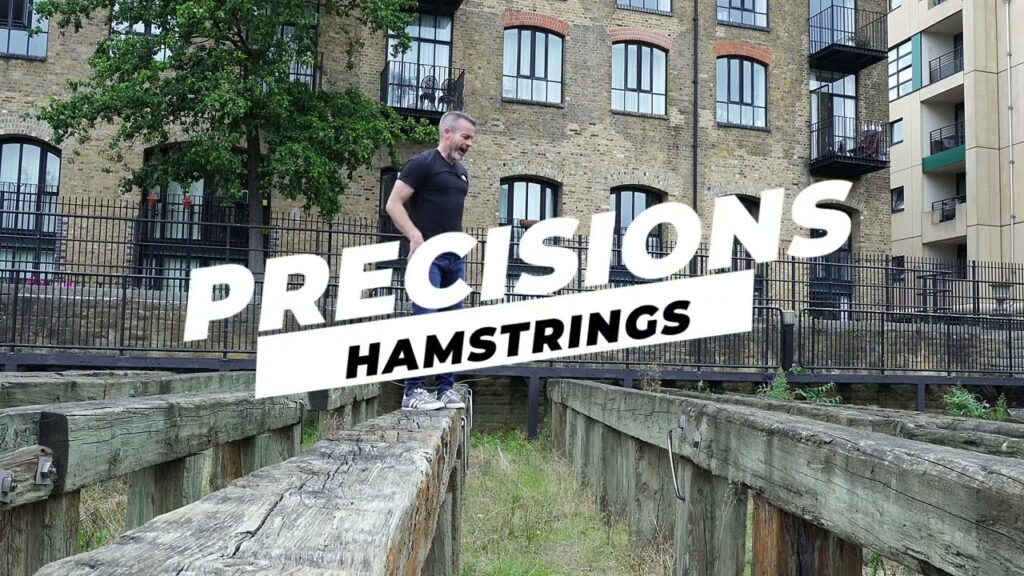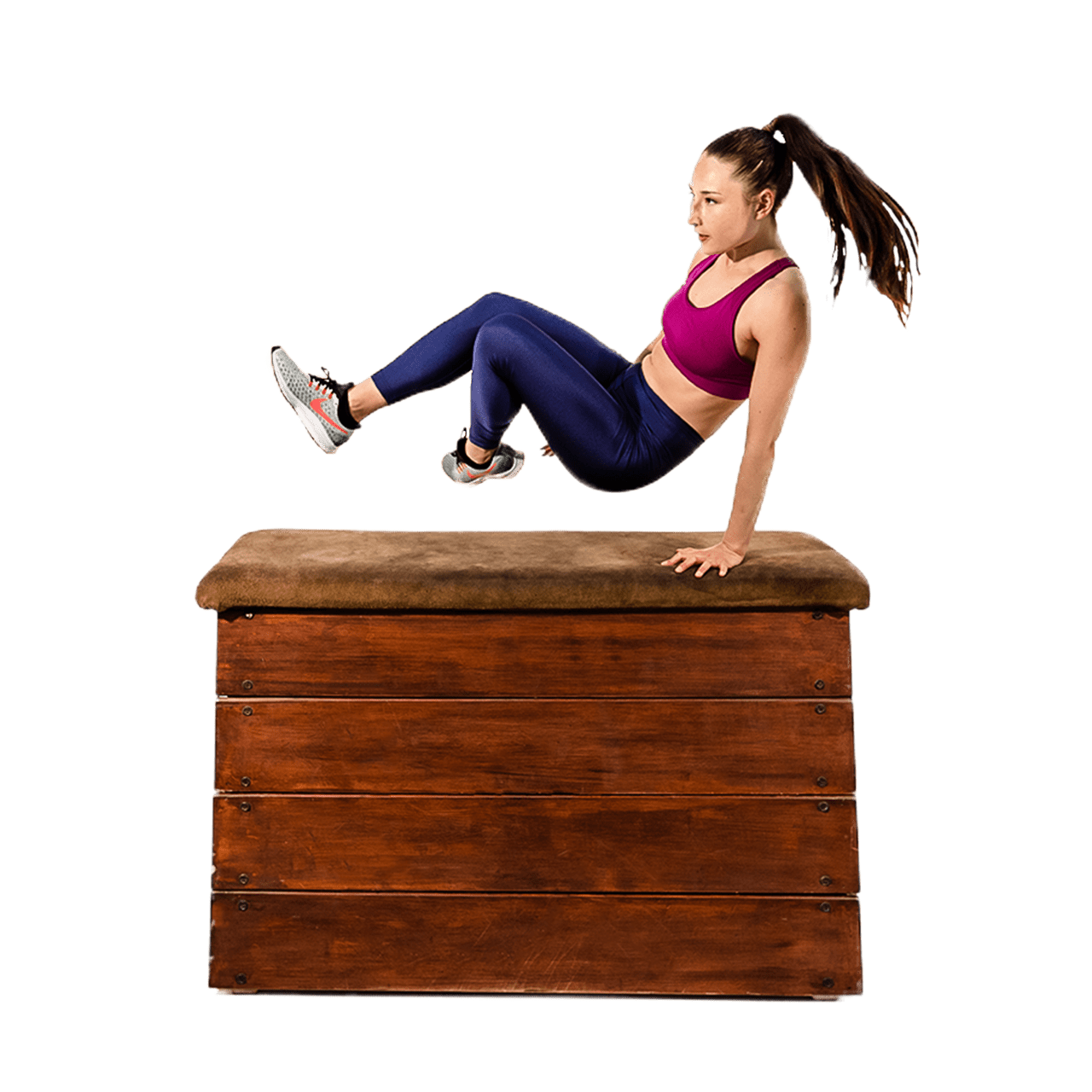When it comes to parkour, many practitioners face a common issue: over-reliance on the quadriceps. This muscle group often becomes overly dominant during jumps, leading to a host of problems like patellar tendonitis and runner’s knee. This tutorial will explore how to maintain a balanced approach to your jumps, helping you avoid injuries and develop a more sustainable technique.
To start improving your form, focus on how your knees align during landings. Instead of allowing your knees to propel forward past your toes, try to sit back a bit as you land. This means engaging your hamstrings and glutes more effectively. Visualize your landing position: aim to keep a slight bend in the knees while pushing your hips back, which will shift some tension away from your quads. The key is to practice this adjustment consistently, especially during larger jumps where the tendency is to rely on your quad strength. With time and attention, you'll find a good balance that supports longevity in your movement practice.
In summary, paying attention to your landing form can lead to better performance and fewer injuries in parkour. It’s all about finding that sweet spot where your knees don’t extend too far forward, allowing your hamstrings and glutes to share some of the workload. Keep practicing this approach, and you’ll not only enhance your skill but also your overall enjoyment of parkour.
- Focus on knee alignment; avoid letting them go past your toes during landings.
- Shift your weight back onto your hamstrings and glutes to reduce quad dominance.
- Consistent practice of this technique can prevent injuries and improve performance.
0.84now we're getting into some of the2.679details4.4and this is a little tricky to explain8.12because it's going to be down to you and10.24how you12.24feel one of the things that tends to14.92happen with especially in parkour is we18.32become very quad dominant so this muscle21.8here becomes very very strong and that26.039also comes with problems it tends to30.56um pull on the tendon and give us33.879tendonitis or patella tendonitis36.28runner's knee and this can be avoided40.96from doing so many jumps where the quad45.52is only being used and you can see it47.92because the knees tend to get pushed50.36forward a lot52.719so um what that looks like is uh56.16actually if I come this57.879way you'll you'll see like like the60.16knees getting pushed way further on the63.12landing so from here it's like that so66.36the knees are way forwards and you're in69.56you're in an okay position but you're72very heavy on the quad and the you can74.2feel the quad doing a lot of work75.92contraction is good78.84however you want to balance that out and81.799you want to83.32push a little bit of the tension towards86.52the hamstring and the glutes as well and89.92this is a little tricky to get right but93.119it's more of like a knees don't go past96.84the toes or sort of a little bit and99.159you're sitting back rather than pushing101.96forwards so there's this position and104.439then there's this position and you're106.68sort of like pushing your bum back and108.52you're going to feel your hamstrings110.2kind of spark up a little bit more now114.119again It's tricky to do especially when116.079you're doing bigger117.439jumps because you're going to want to119.32default your120.68strengths however the more practice you123.039do the more longevity the the more126.24you're going to be doing it for a long127.64time and it also means you're not going129.44to be getting these overuse injuries so132.2when you jump sit back a little bit136.04rather than push forward onto the knees138.879be wary of where those knees are and try142.56not to go too far forward
1 00:00:00,000 --> 00:00:03,000 now we're getting into some of the 2 00:00:02,000 --> 00:00:07,000 details 3 00:00:04,000 --> 00:00:09,000 and this is a little tricky to explain 4 00:00:08,000 --> 00:00:12,000 because it's going to be down to you and 5 00:00:10,000 --> 00:00:14,000 how you 6 00:00:12,000 --> 00:00:18,000 feel one of the things that tends to 7 00:00:14,000 --> 00:00:20,000 happen with especially in parkour is we 8 00:00:18,000 --> 00:00:25,000 become very quad dominant so this muscle 9 00:00:21,000 --> 00:00:29,000 here becomes very very strong and that 10 00:00:26,000 --> 00:00:33,000 also comes with problems it tends to 11 00:00:30,000 --> 00:00:35,000 um pull on the tendon and give us 12 00:00:33,000 --> 00:00:40,000 tendonitis or patella tendonitis 13 00:00:36,000 --> 00:00:45,000 runner's knee and this can be avoided 14 00:00:40,000 --> 00:00:46,000 from doing so many jumps where the quad 15 00:00:45,000 --> 00:00:49,000 is only being used and you can see it 16 00:00:47,000 --> 00:00:51,000 because the knees tend to get pushed 17 00:00:50,000 --> 00:00:55,000 forward a lot 18 00:00:52,000 --> 00:00:57,000 so um what that looks like is uh 19 00:00:56,000 --> 00:01:00,000 actually if I come this 20 00:00:57,000 --> 00:01:02,000 way you'll you'll see like like the 21 00:00:60,000 --> 00:01:06,000 knees getting pushed way further on the 22 00:00:63,000 --> 00:01:09,000 landing so from here it's like that so 23 00:00:66,000 --> 00:01:11,000 the knees are way forwards and you're in 24 00:00:69,000 --> 00:01:13,000 you're in an okay position but you're 25 00:00:72,000 --> 00:01:15,000 very heavy on the quad and the you can 26 00:00:74,000 --> 00:01:18,000 feel the quad doing a lot of work 27 00:00:75,000 --> 00:01:20,000 contraction is good 28 00:00:78,000 --> 00:01:22,000 however you want to balance that out and 29 00:00:81,000 --> 00:01:25,000 you want to 30 00:00:83,000 --> 00:01:29,000 push a little bit of the tension towards 31 00:00:86,000 --> 00:01:32,000 the hamstring and the glutes as well and 32 00:00:89,000 --> 00:01:35,000 this is a little tricky to get right but 33 00:00:93,000 --> 00:01:39,000 it's more of like a knees don't go past 34 00:00:96,000 --> 00:01:41,000 the toes or sort of a little bit and 35 00:00:99,000 --> 00:01:44,000 you're sitting back rather than pushing 36 00:00:101,000 --> 00:01:45,000 forwards so there's this position and 37 00:00:104,000 --> 00:01:48,000 then there's this position and you're 38 00:00:106,000 --> 00:01:49,000 sort of like pushing your bum back and 39 00:00:108,000 --> 00:01:53,000 you're going to feel your hamstrings 40 00:00:110,000 --> 00:01:55,000 kind of spark up a little bit more now 41 00:00:114,000 --> 00:01:57,000 again It's tricky to do especially when 42 00:00:116,000 --> 00:01:59,000 you're doing bigger 43 00:00:117,000 --> 00:01:60,000 jumps because you're going to want to 44 00:00:119,000 --> 00:01:62,000 default your 45 00:00:120,000 --> 00:01:65,000 strengths however the more practice you 46 00:00:123,000 --> 00:01:67,000 do the more longevity the the more 47 00:00:126,000 --> 00:01:69,000 you're going to be doing it for a long 48 00:00:127,000 --> 00:01:71,000 time and it also means you're not going 49 00:00:129,000 --> 00:01:75,000 to be getting these overuse injuries so 50 00:00:132,000 --> 00:01:78,000 when you jump sit back a little bit 51 00:00:136,000 --> 00:01:82,000 rather than push forward onto the knees 52 00:00:138,000 --> 00:01:86,000 be wary of where those knees are and try 53 00:00:142,000 --> 00:01:86,000 not to go too far forward

